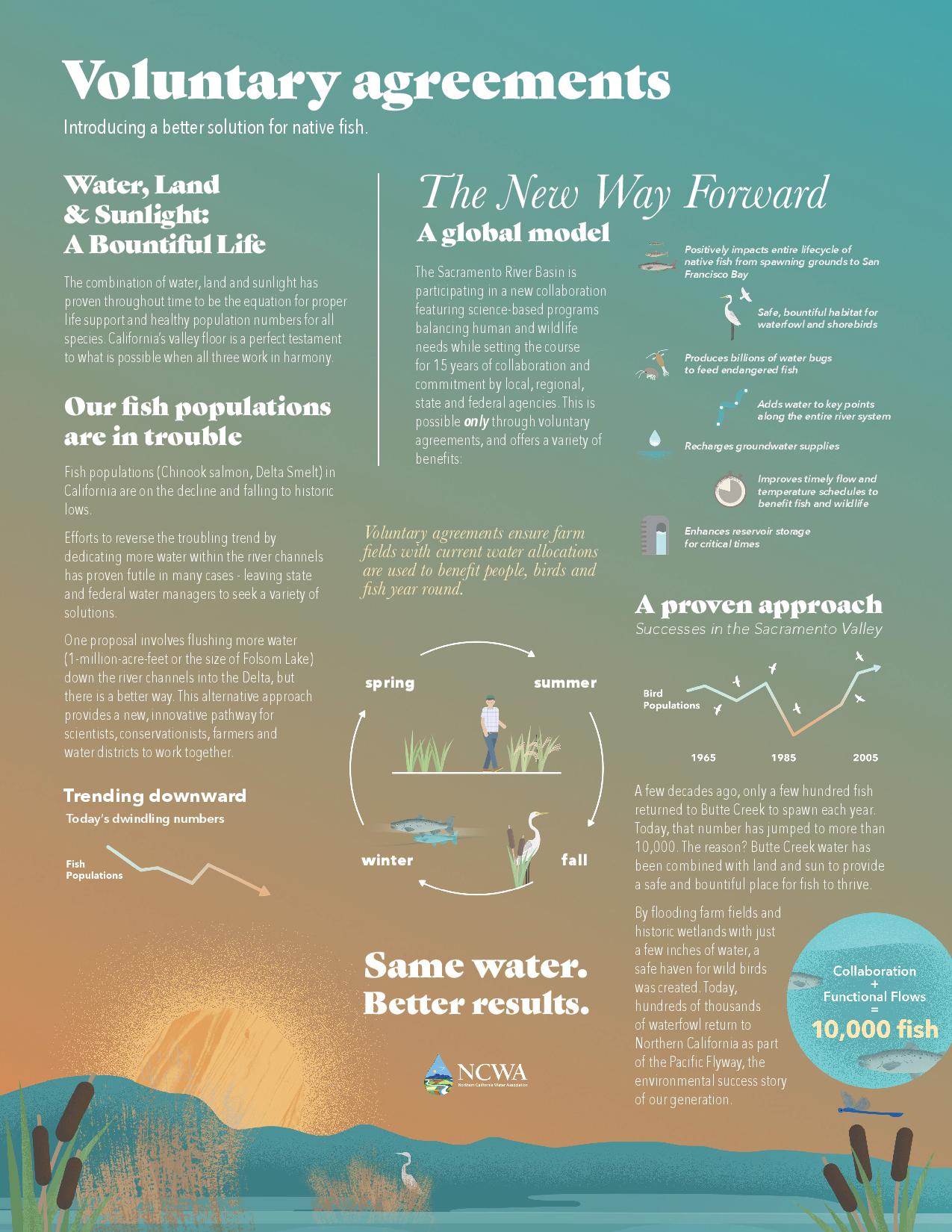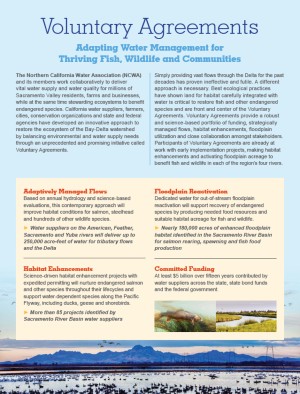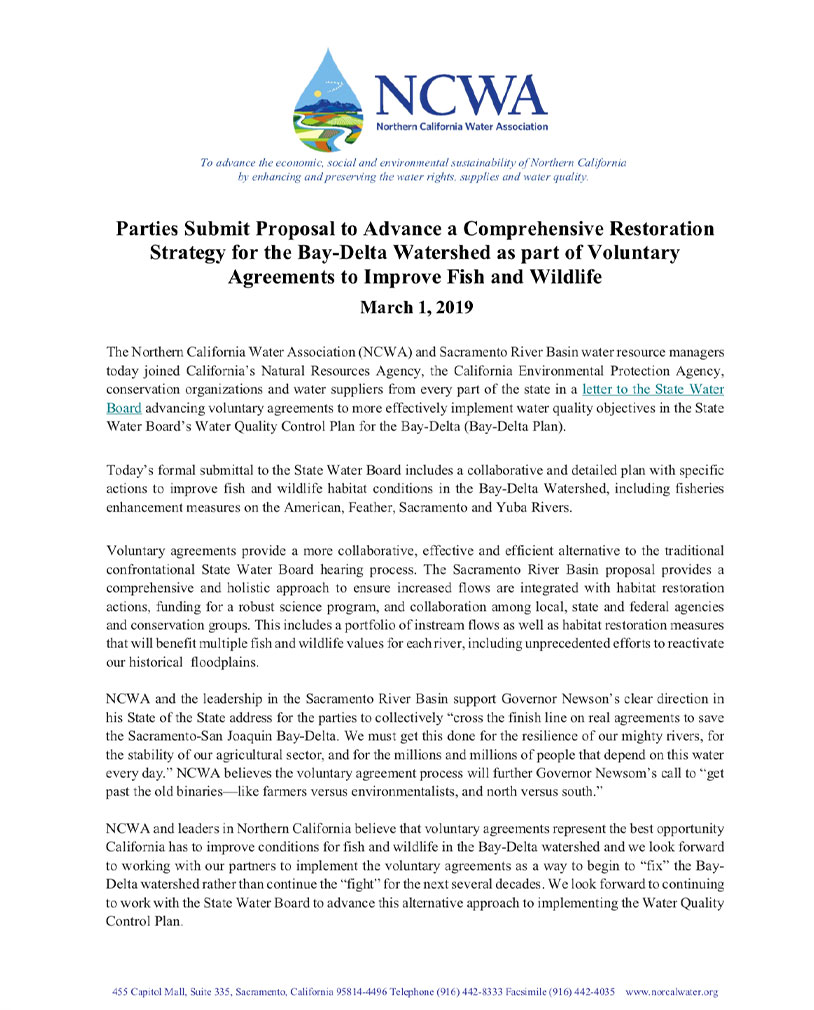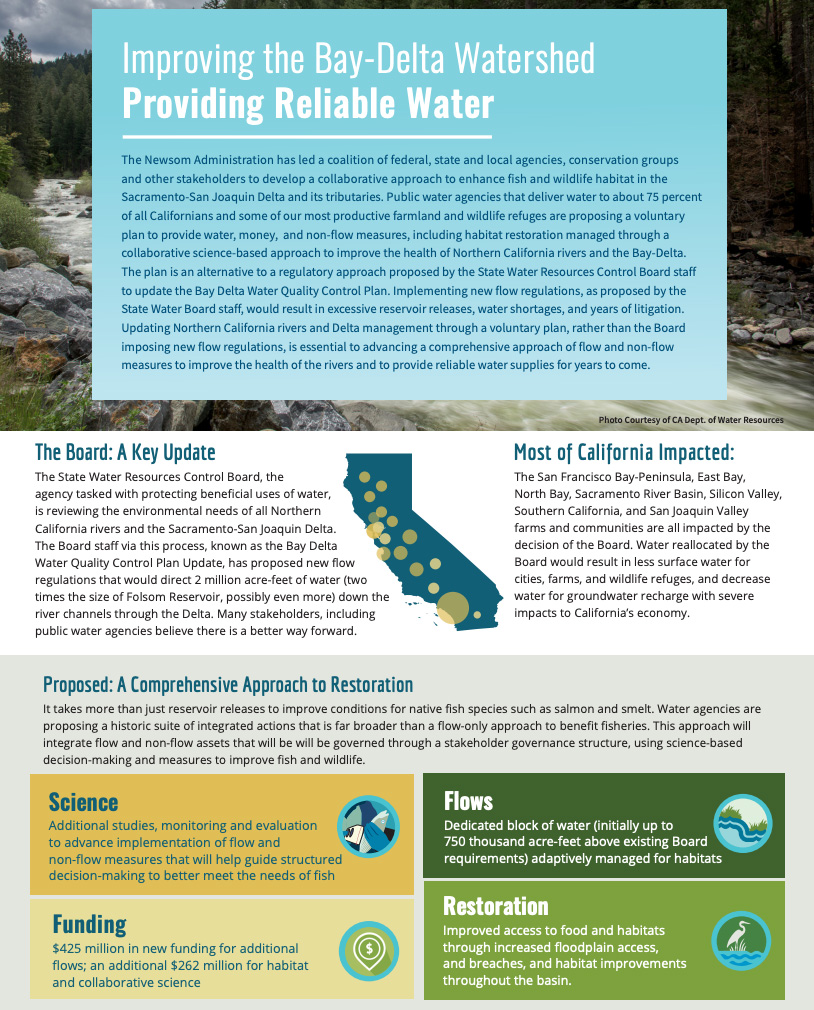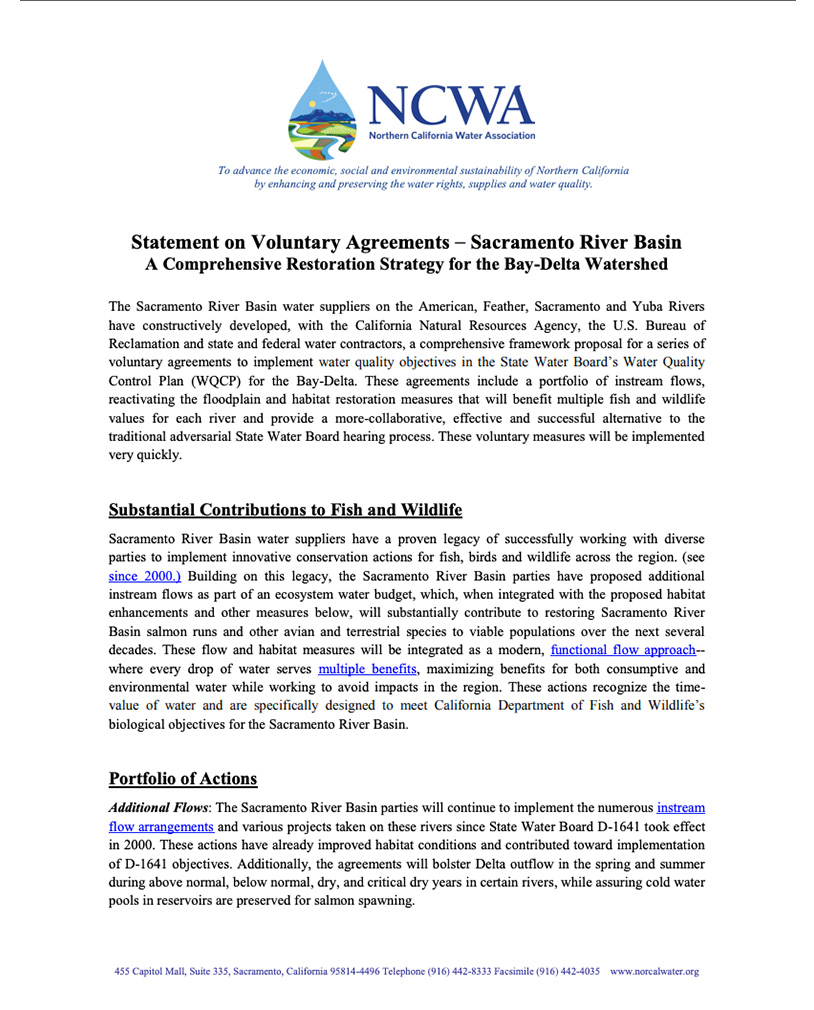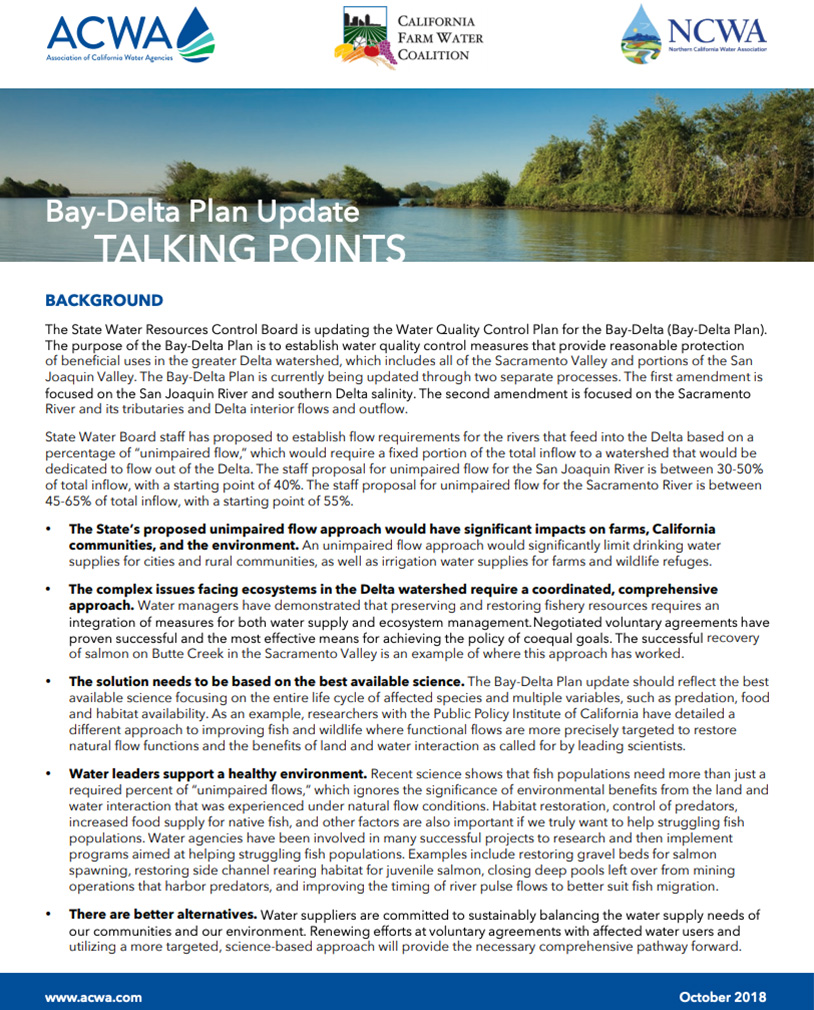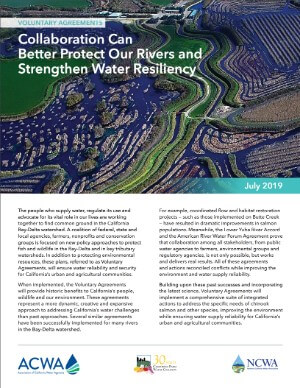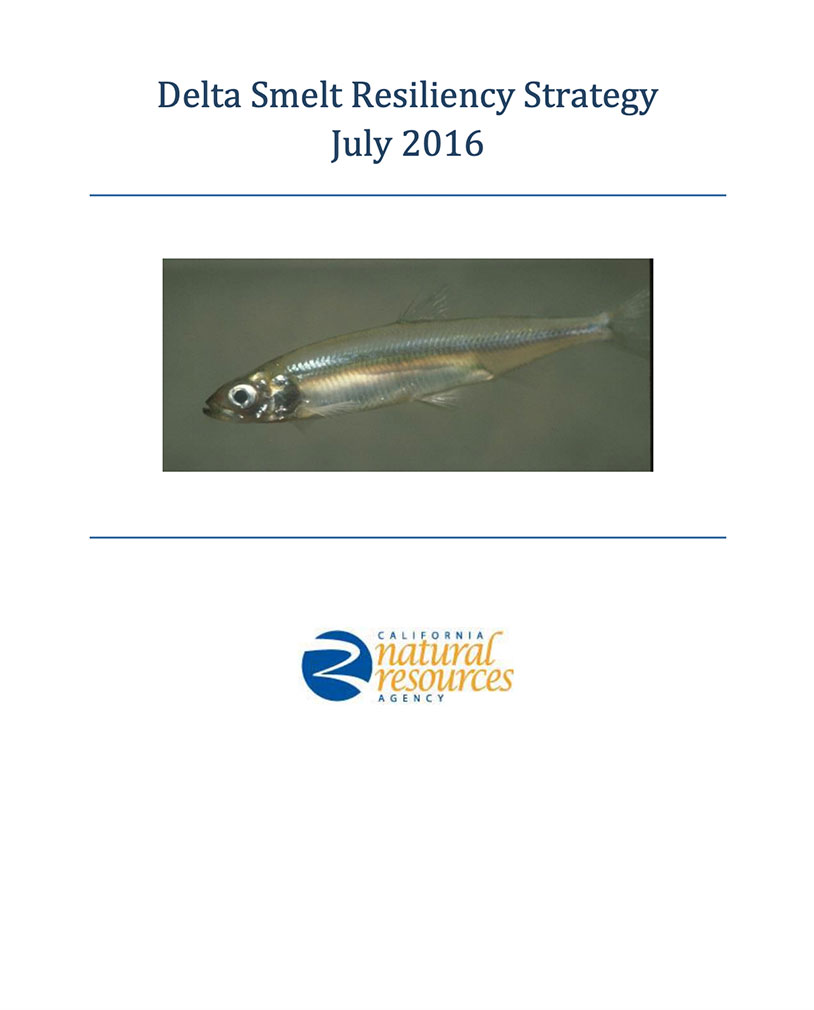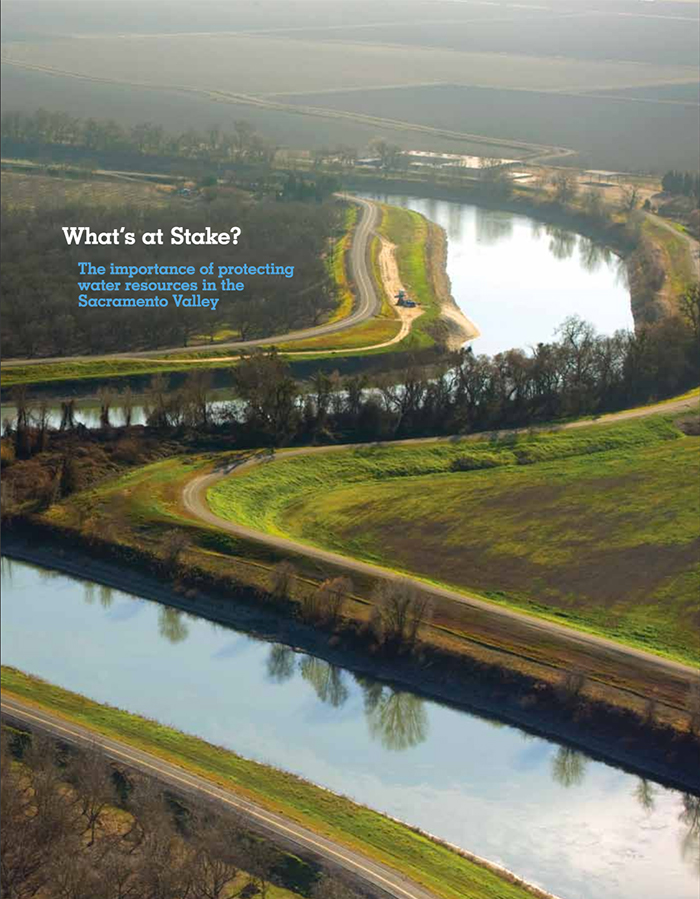The Sacramento-San Joaquin Rivers Delta and San Francisco Bay (hereinafter “Bay-Delta”) is an important economic and environmental resource benefitting all of California and the nation. The Northern California Water Association (NCWA) and Sacramento Valley water resources managers recognize the importance to California’s future of a healthy Bay-Delta and providing high quality and reliable water supplies for all beneficial uses. For the past several decades, NCWA has been a strong and constructive participant in the various processes designed to help solve the challenges in the Bay-Delta. We will continue to play a constructive role in implementing necessary solutions to Bay-Delta problems, as long as the actions do not affect the ability to serve water for multiple beneficial uses in the Sacramento Valley, including cities and rural communities, fish, farms, birds and recreation.
NCWA and Sacramento Valley water resources managers have supported the state’s co-equal goals–providing a more reliable water supply for California and protecting, restoring and enhancing the Delta ecosystem–and have encouraged success in Voluntary Agreements as a new way forward in California.
Voluntary Agreements: A New Way Forward
For the past several decades, through the water quality control plan (State Water Board D-1641) and Biological Opinions (BiOps), more than 1 million acre-feet (Folsom Lake when full) has been dedicated to Delta outflow through these regulatory programs. During this same time, fish in the Delta have declined and water supply reliability has been reduced, thus defying the state’s co-equal goals and calling for adaptive management of our precious water resources.
As a result, we believe California needs a new and different path forward for the Bay-Delta. California needs new and modern approaches to supply water for cities and rural communities, farms, fish, birds and recreation in the 21st century. We have joined other parties from every part of California in calling on the Governor and both the state and federal administrations to embrace a coordinated and modern 21st century approach to water management for the Bay-Delta by protecting all beneficial uses of water.
We support California’s co-equal goals of protecting, restoring and enhancing the Delta ecosystem and providing more reliable water supplies for California. We believe these goals can be achieved by holistically planning for ecosystem functions to ensure the most efficient use of water for all beneficial uses, by using the interaction of flow with other habitat aspects to create the type of conditions that allow us to meet our objectives. This requires us to take into account the altered physical landscape in California and our highly managed water system, which must be addressed in combination with appropriate hydrology to protect and balance all beneficial uses of water.” The voluntary agreements that are being advanced provide a new way to accomplish these objectives.
For more information on Voluntary Agreements, see the following:
Importantly, the Voluntary Agreements build upon various efforts over the past several decades to improve conditions for fish and wildlife. Since the State Water Board’s last major water quality control plan update in 2000, there has been a serious and concerted effort to implement the following types of programs and projects in the Sacramento Valley, including:
- flow arrangements;
- habitat enhancements;
- fish passage improvements;
- fish-food production projects; and
- studies to advance the science that informs management decisions.
These actions are described in comprehensive detail in the following document.
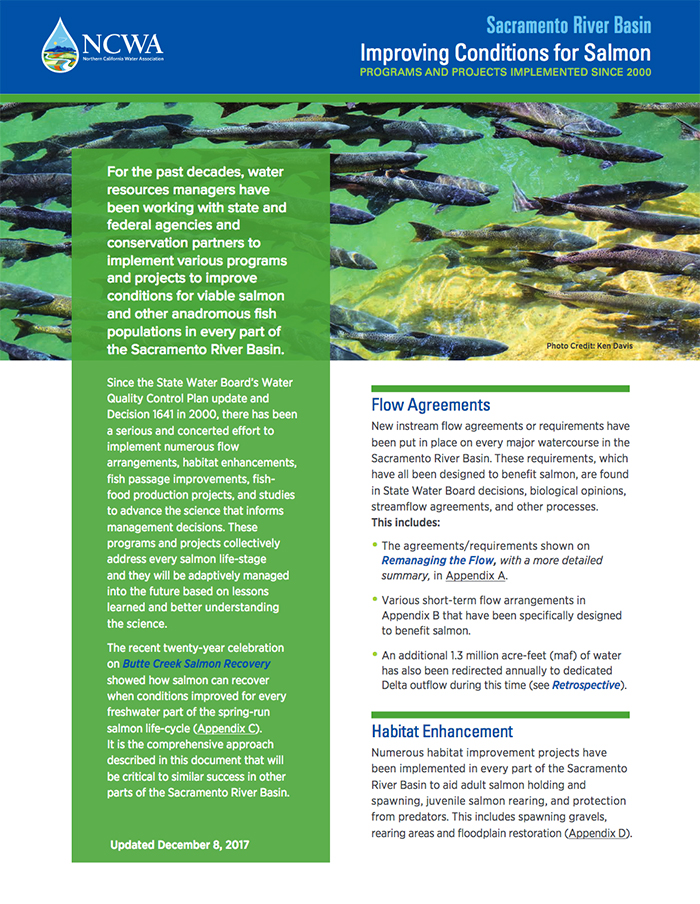
Additionally, all the major rivers have re-managed flows to improve conditions for salmon.
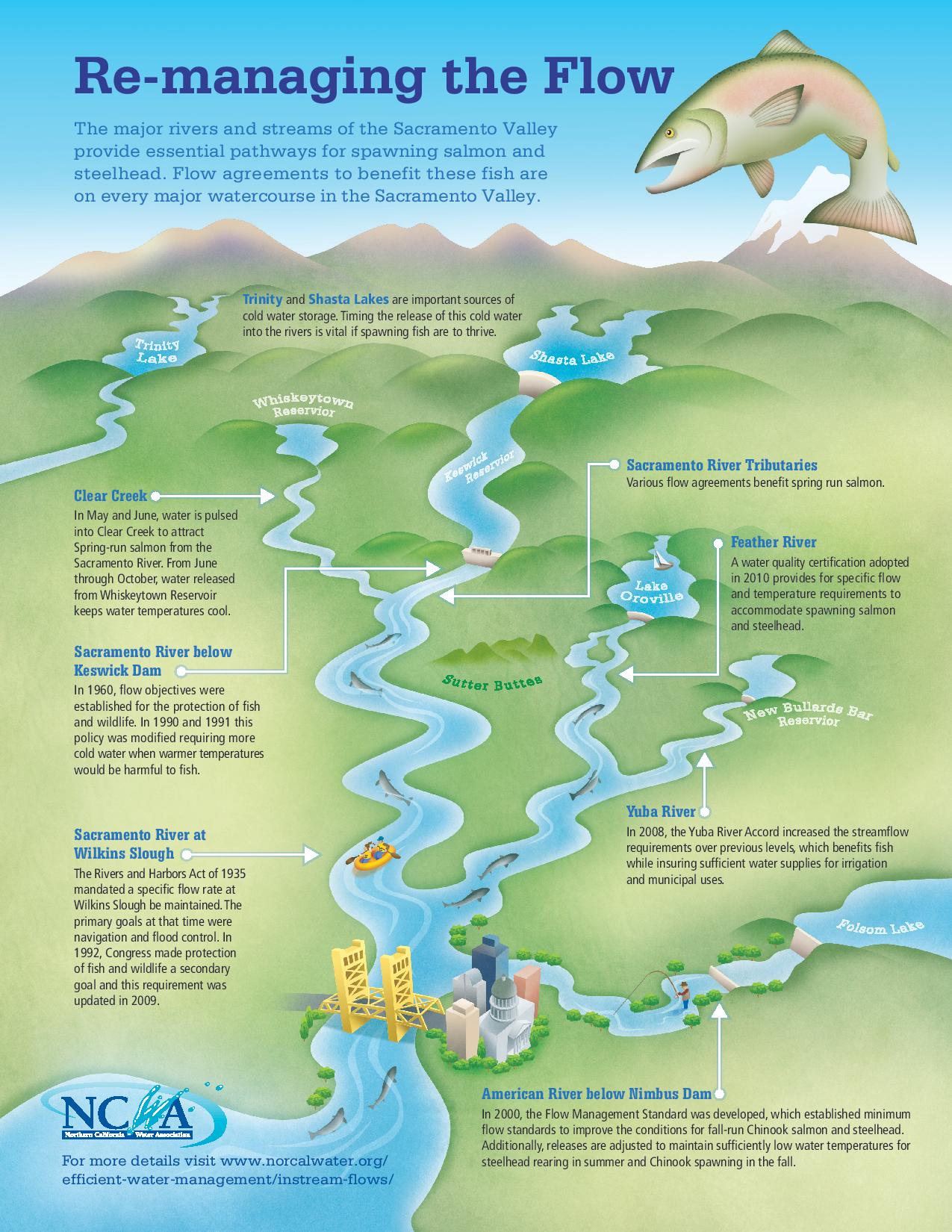
Additionally, water suppliers on the west-side of the Sacramento Valley have re-routed flows through the Colusa Basin Drain and the Yolo Bypass several years to help implement the Delta Smelt Resiliency Strategy and will continue this program as needed in the future
Bay-Delta Geography
Sacramento Valley water resources all flow from the Sierra Nevada, Coast Range, and southern Cascade through the rich mosaic in the Sacramento Valley, where the rivers come together and funnel south past the Capital through the Delta, the Bays and then to the Pacific Ocean. Since the late 1800s, leaders throughout the Sacramento Valley have secured a variety of water rights and contracts for water and have invested significant public and private capital so that water supplies can be directly diverted or stored to meet the various needs in the Sacramento Valley. These water rights and supplies are essential to serve multiple-benefits and support the economic, social, and environmental sustainability of the Sacramento Valley by enhancing and preserving the rich mosaic of farmlands, cities and rural communities, refuges and managed wetlands, and meandering rivers that support fisheries and wildlife. These water rights and contracts also serve as the foundation for water management throughout California, including the state and federal water projects.
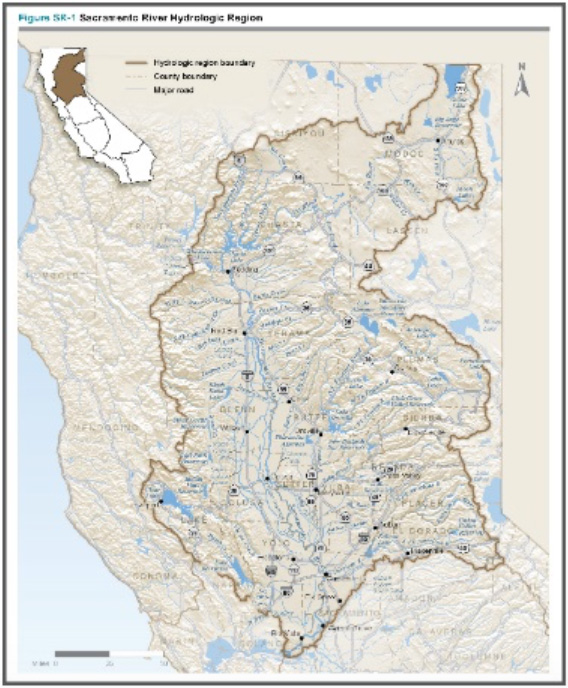
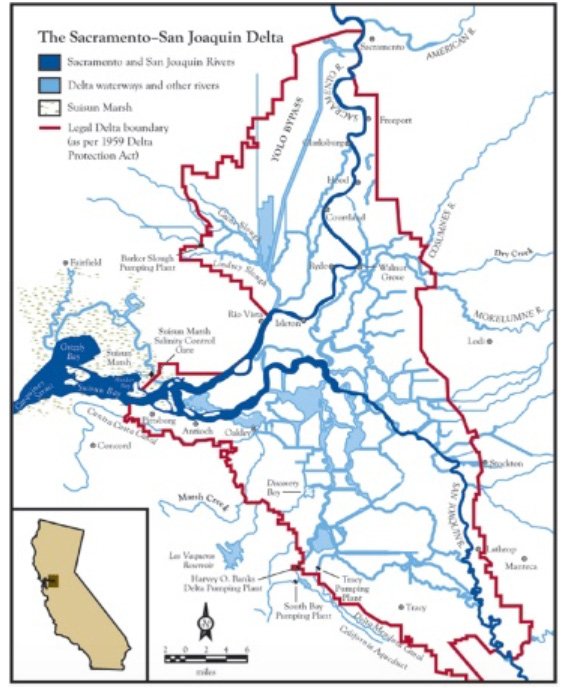
What’s at Stake
As the Bay-Delta debate continues in various forums, it is important that decision-makers and the public understand What’s at Stake in the Sacramento Valley. This is described in the publication below, which shows both the economic and environmental consequences if water is redirected away from Northern California and the Sacramento Valley.
NCWA Bay-Delta Task Force
The NCWA Bay-Delta Task Force meets monthly to coordinate all the various efforts in the Sacramento Valley surrounding the Bay-Delta and to bring our team of Directors, water resources managers, attorneys, biologists, and engineers together to coordinate, strategize and take action to help manage the water resources in our region for multiple beneficial uses.
Delta Resources
For more information on the Delta, please see the following:
- A Beginner’s Guide to the Sacramento-San Joaquin Delta
- Bay-Delta Live
- Delta Conservancy
- Delta Protection Commission
- Delta Stewardship Council
- North Delta Water Agency
- San Francisco Estuary Institute
